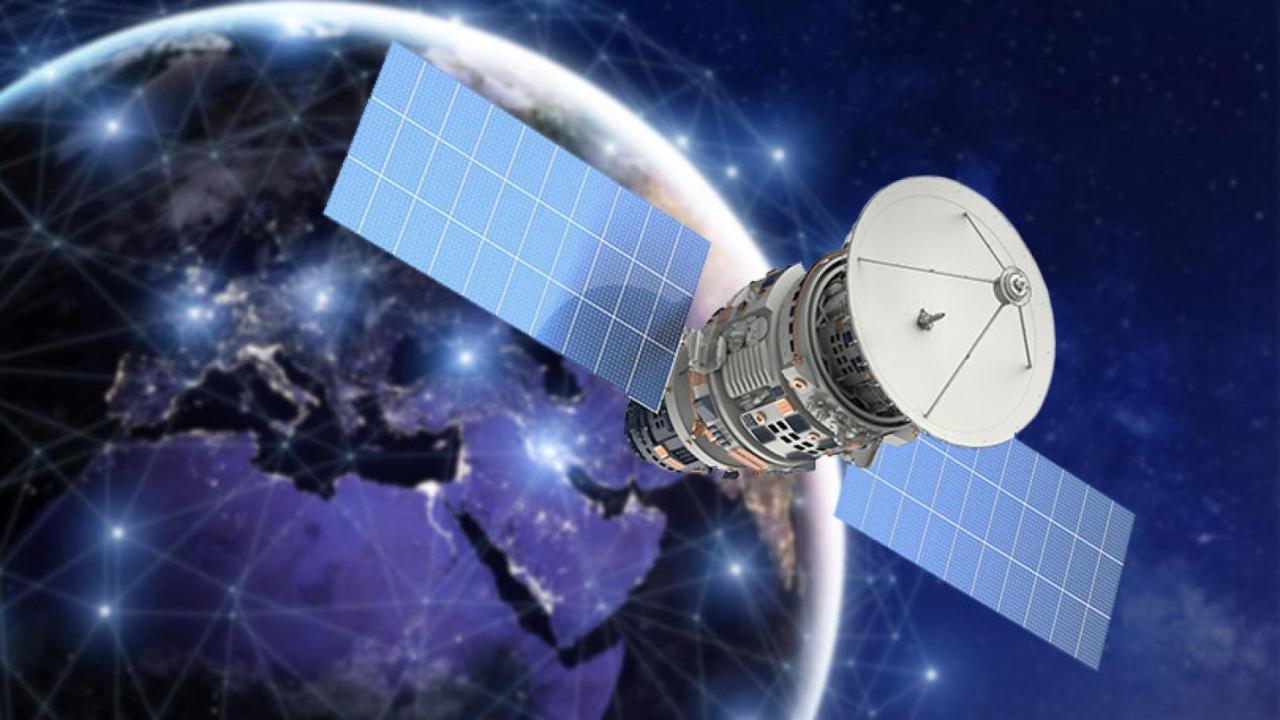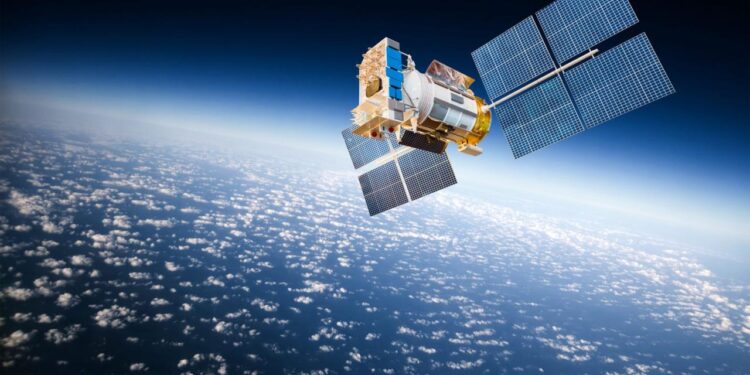In the digital age, access to the internet has become a fundamental necessity, a gateway to education, commerce, communication, and entertainment. Yet, for billions of people around the world, this access remains a distant dream, a privilege of urban life that has yet to reach remote villages, vast oceans, and underdeveloped regions. The traditional infrastructure of fiber optic cables and cellular towers simply cannot, and in many cases will not, reach every corner of the globe. But a new and powerful force is emerging from low-Earth orbit, one that promises to shatter this digital divide and usher in a new era of global connectivity: satellite internet. This transformative technology is no longer the slow, expensive service of the past; it is a new generation of high-speed, low-latency networks that are poised to connect the entire planet. This comprehensive article delves into the profound breakthrough of satellite internet, exploring the foundational technologies that make this a reality, the diverse applications that are already reshaping our world, and the immense opportunities and critical challenges that lie ahead as we connect the final frontier.
For decades, satellite internet was a last resort, a slow and unreliable service that was often the only option for those living in rural areas. The technology relied on a few massive, geostationary satellites orbiting 22,236 miles above the Earth. The immense distance between the satellite and the ground resulted in a significant delay, or latency, that made tasks like video conferencing and online gaming impossible. The cost of the service was also prohibitively high, limiting its adoption to a small, niche market. The traditional model was simply not a viable solution for widespread, high-speed connectivity. But a new generation of satellite internet, spearheaded by companies like Starlink, OneWeb, and Project Kuiper, has completely rewritten the rulebook.
This new wave of satellite internet is built on a new paradigm: a massive constellation of thousands, and eventually tens of thousands, of small, low-Earth orbit (LEO) satellites. These satellites orbit just a few hundred miles above the Earth, a distance so close that it drastically reduces latency, making the service fast and responsive. The sheer number of satellites ensures that there is always one in view, providing a consistent and reliable connection. The cost of launching these small satellites has also plummeted, making the entire project economically feasible on an unprecedented scale. This is more than a technological upgrade; it is a profound societal shift that is democratizing access to information and creating new opportunities for education, commerce, and human connection in every corner of the globe. The satellite internet revolution is here, and its reach is truly global.
The Systems Power Global Connectivity

The power of next-generation satellite internet is built on a sophisticated and integrated technological foundation that is fundamentally different from its predecessors.
A. Low-Earth Orbit (LEO) Satellite Constellations
The most defining feature of the new wave of satellite internet is the use of low-Earth orbit (LEO) satellite constellations. Instead of a few massive, geostationary satellites, these systems consist of thousands of small, refrigerator-sized satellites orbiting just a few hundred miles above the Earth’s surface. This proximity is the key to solving the latency problem that plagued older systems. The signal travels a much shorter distance, resulting in a latency that is comparable to a traditional fiber optic or cellular connection. The sheer number of satellites in the constellation ensures that there is always one passing overhead, providing a continuous and reliable connection to the ground.
B. Phased Array Antennas on the Ground
To connect to these fast-moving satellites, a new type of ground terminal is required. The older, geostationary systems used a large, fixed dish that had to be pointed at a single satellite. The new LEO systems use a flat, rectangular phased array antenna. This antenna has no moving parts and can electronically steer its beam to track multiple satellites simultaneously as they move across the sky. This allows for a seamless transition from one satellite to the next, ensuring that the user’s connection is never interrupted. The design of these antennas also makes them more compact, affordable, and easier to install, a crucial factor in their widespread adoption.
C. Satellite-to-Satellite Communication (Inter-Satellite Links)
The ultimate goal of a global satellite internet network is to bypass the ground infrastructure entirely. This is achieved through inter-satellite links, where the satellites can communicate with each other using laser technology. A signal from a ground terminal can be beamed to a satellite, which can then use its laser links to relay the data to another satellite, and then to a ground terminal on the other side of the planet, all without ever touching a fiber optic cable. This is particularly useful for connecting remote and inaccessible regions, such as the oceans, the poles, or rural areas where a ground station is not a viable option.
D. The Role of Artificial Intelligence (AI) and Network Management
Managing a constellation of thousands of satellites, each moving at over 17,000 miles per hour, is a logistical nightmare. This is where artificial intelligence (AI) and machine learning play a crucial role. AI algorithms are used to optimize the network, routing the data through the most efficient path, and managing the power and positioning of each satellite to ensure optimal performance. The AI is the “brain” of the network, making real-time decisions to ensure that the entire system is operating as a single, cohesive unit. This level of automation is what makes a massive LEO constellation both possible and practical.
Applications Across a Wide Range of Industries

The benefits of satellite internet are not limited to a single sector; they are being applied to a diverse array of industries, creating new efficiencies and opportunities.
A. Bridging the Global Digital Divide
The most significant application of satellite internet is its ability to provide high-speed connectivity to the 3 billion people who are currently offline. This is particularly impactful in remote and rural areas where a traditional cellular tower or fiber optic cable is too expensive or logistically impossible to deploy. The ability to connect these underserved populations to the internet will unlock new opportunities for education, healthcare, and commerce, allowing a farmer in a remote village to sell their goods to a global market, or a student to take an online course from a major university.
B. Maritime, Aviation, and Remote Operations
For industries that operate in remote and disconnected environments, satellite internet is a game-changer. In the maritime industry, ships can now have a high-speed connection for crew wellness, navigation, and real-time data from their onboard sensors. In aviation, airlines can provide a truly high-speed internet experience for passengers, and the crew can receive real-time weather and flight data. For remote operations, such as mining, oil and gas, or scientific research in the Arctic, satellite internet provides a reliable way to connect and manage operations from a central location, improving safety and efficiency.
C. Emergency Response and Disaster Relief
In a natural disaster, traditional ground-based communication infrastructure—cellular towers, fiber optic cables, and power grids—can be quickly destroyed. Satellite internet, with its ability to operate independently of a ground infrastructure, is a perfect tool for emergency response and disaster relief. A portable ground terminal can be quickly deployed to an affected area, providing a crucial communication link for first responders, aid organizations, and victims to connect with their loved ones and coordinate relief efforts.
D. IoT and Industrial Applications
The same technology that is connecting our homes is also connecting the industrial world. The Internet of Things (IoT), a vast network of billions of connected devices, needs a global and ubiquitous network to function. Satellite internet provides this, allowing companies to track their assets, monitor their machinery, and collect data from sensors anywhere in the world, from a remote oil pipeline to a shipping container in the middle of the ocean. This is a crucial step toward a truly global and interconnected industrial ecosystem.
The Challenges and the Future of Satellite Internet
Despite its immense promise, the journey to a fully connected world via satellite internet is not without significant challenges that must be addressed.
A. Orbital Debris and Satellite Traffic Management
The constellations being deployed consist of thousands of satellites, and the plans are for tens of thousands more. This raises a major concern about orbital debris, the “space junk” that is already a threat to satellites and human spaceflight. We will need to develop new regulations and a global system for satellite traffic management to ensure that these constellations do not collide with each other or with other objects in orbit. This is a critical challenge that requires a collaborative effort from governments and the private sector.
B. Light Pollution and Astronomical Observation
The sheer number of LEO satellites is also raising concerns about light pollution and its impact on astronomical observation. These satellites, which are visible to the naked eye as they reflect sunlight, can interfere with the work of astronomers, making it more difficult to observe the night sky and discover new astronomical phenomena. Companies are working to mitigate this by designing satellites with anti-reflective coatings and by orienting them to be less visible, but it remains a major concern for the scientific community.
C. The Cost of the Service and Global Equity
While the cost of the technology is falling, the service itself can still be expensive for those living in the poorest regions of the world. The challenge is to find a business model that can provide an affordable and equitable service to these underserved populations. This may require new government subsidies, public-private partnerships, or a new payment model that is designed for a developing economy. The goal is to bridge the digital divide, not to create a new one.
D. Regulatory and Geopolitical Challenges
The deployment of a global satellite internet network is a geopolitical challenge. The constellations are being deployed by private companies, but they operate in international space. This raises questions about regulatory oversight, national sovereignty, and the role of governments in managing this new global infrastructure. The potential for a nation-state to use its network for surveillance or to censor content is a major concern that needs to be addressed with a new international framework for space law and governance.
Conclusion
In conclusion, the new era of satellite internet is a transformative force that is poised to fundamentally reshape our world. By moving beyond the limitations of traditional ground-based infrastructure, this technology is creating a new and ubiquitous network that can provide high-speed, low-latency connectivity to every corner of the globe. The technological pillars of this revolution—the massive LEO constellations, the innovative phased array antennas, the powerful inter-satellite links, and the intelligence of AI—are all working in synergy to create a seamless and reliable service that is far superior to its predecessors.
The promise of this technology is immense. It offers a solution to the most pressing issue of our time: the global digital divide. It holds the potential to unlock new opportunities for education, healthcare, and commerce in the world’s most remote and underserved regions. It will also revolutionize industries from maritime and aviation to emergency response and industrial IoT, creating a truly global and interconnected economy. The satellite internet revolution is not just about a better internet connection; it is about a more equitable, more connected, and more resilient world.
However, as we embrace this new era, we must also be mindful of the challenges that lie ahead. The issues of orbital debris, light pollution, and the cost of the service are not footnotes; they are central to the responsible development of this technology. We must navigate these challenges with a new spirit of global collaboration, ensuring that the final frontier of connectivity is built in a way that is sustainable, equitable, and beneficial to all of humanity. The satellite internet revolution is a journey that will be defined not just by what we can do in space, but by what we do with the power of connectivity on Earth. The journey is well underway, and the final destination is a world connected.




